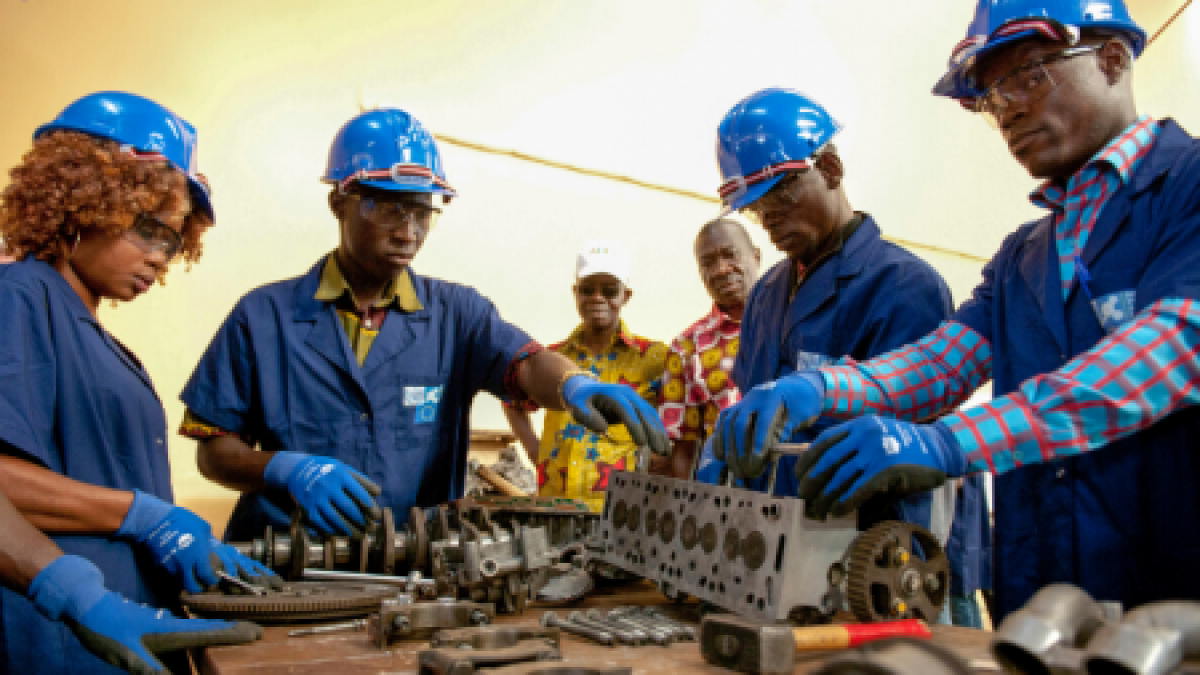We all thought we had made such great strides when safe drinking water became available in plastic bottles.
There are those among us who do not know that once upon a time, if you were on the road, you took your life in your hands every time you drank water from an unknown source.
The main point about the provision of pipe-borne water to a community was that safe and potable water had arrived and you could drink water and not get waterborne diseases.
The convenience of water being available at the turn of a tap was a by-product. Women and young children got up at dawn to fetch water for the use of the household.
Drinking water was mostly harvested from rainwater and if fetched from the river or stream, would be boiled or filtered and kept in special pots and only specially designated cups could be used to fetch water from the drinking water pots.
There were communities like mine, Abutia, that could boast of having safe drinking water from a fresh stream and did not know about guinea worm and other such horrible waterborne diseases. This turned out in the end to have been quite a disadvantage because to this day, we couldn’t convince the authorities Abutia should be prioritised in the provision of pipe-borne water; we were not known as a community that had waterborne disease problems.
But I digress.
Water
We were all careful about the water we drank from unknown sources. Travellers to countries in Africa were warned to be careful about the water they drank.
You were advised as a young journalist going on your first major assignment to stick to coconut water and avoid water.
For years, the Americans made a big show of demonstrating that the water from their taps was safe. In their restaurants, no matter how fancy the establishment, they would serve tap water from jugs.
Indeed, the Americans had such confidence in the quality of their drinking water and such little confidence in the potability of other people’s water, they used to carry water from America in Air Force One to wherever in the world their president travelled to.
I hear that when President Clinton came to Ghana on his historic visit, the Americans were ready to risk the displeasure of Ghana by refusing to have their president served water on arrival as our custom demands because they didn’t trust our water.
Again, I digress.
It is the French who took the greatest advantage of the distrust we all had about the safety of the water we drink.
As purveyors of luxury goods, the French added vanity and a touch of snobbery to a great marketing strategy and convinced everyone to buy their bottled water to show you they had made it.
If you went to a high-end restaurant anywhere in the world, you had to ask for Evian or Perrier bottled water and they were sold at a premium.
It took me a while to realise that the French bottled water craze had more to it than their wanting to sell the water equivalent of Christian Dior and Yves St Laurent.
I was thoroughly shocked to discover in a French hotel room, back in the 1970s, a sign that said the water in the tap was not recommended for drinking.
Obviously, since they couldn’t be sure about the water in their taps, it was easy to convince everyone it was better to drink bottled water and once hooked, you had to have Evian or Perrier to show you had arrived.
Again, I digress
Then the large-scale production of safe drinking water in plastic bottles started and it changed many things in our lives. The fear of having to drink unsafe water disappeared.
Politicians could accept and drink water as custom demands at every stop in every village and hamlet without worrying they would catch something nasty.
Diarrhoeal diseases went down dramatically.
Some of us carried a bottle of water with us wherever we went.
Sachet water
In the late 1990s, the manufacture of sachet water started in Nigeria and not unexpectedly, soon moved to Ghana and by the early 2000s, we were drowning in empty sachet bags as the streets, drains, lagoons and ocean fronts became choked with discarded plastic sachets with many people turning to sachet water as their preferred source of drinking water.
There were strong campaigns for sachet water to be banned, but an equally strong argument was made that it provided safe drinking water for the poor.
In the early days, almost all the plastic water bottles were recycled for use in one way or the other. Now the bottled version has far dominated the sachet version in the drinking water market and with it has come fresh and unexpected problems.
It turns out the bottles constitute much more of a nuisance than the sachets and it is more difficult to dispose of them than of the sachets.
We drink a lot of water in my house, I know this not just from the amount of money we spend in buying the water, but in the sheer volume of empty bottles that we accumulate.
I am embarrassed that I contribute so much to the degradation of the environment.
The truth is that there isn’t really a sustainable environmentally friendly way of disposing of plastic bottles.
Some imaginative artistic souls might create some Christmas trees out of these bottles, but it doesn’t begin to address the problem.
But I digress.
What really set me off on this trip along the drinking water path is what I have been noticing at funerals and public gatherings in general.
Take a look when you are at a public event. Bottles of water are distributed and they are most welcome at these interminable events.
Take a look when the event is over, take a look at the funeral grounds and you will notice that very, very few of the bottles are empty. There is water in all the bottles, safe, purified drinking water.
Then take a look when the cleaners come around, they empty all the water on the ground, the safe, purified drinking water that we buy at such high cost.
Even in our homes, take a look when visitors have been and gone. Take a look in the conference rooms when you have finished with meetings, most of the bottles have a lot of water in them; it is all simply emptied on the ground to go to waste.
So, it isn’t only the environment we are destroying with the empty bottles, half of the purified water we buy is thrown away.
Apparently, it is not worth the extra effort for the manufacturers to make the smaller bottles that would cut down on the waste. So, they make the big bottles, everyone drinks just a bit and we throw away the rest.
The arrival of cheap bottled water was supposed to be such a sign of progress.
















